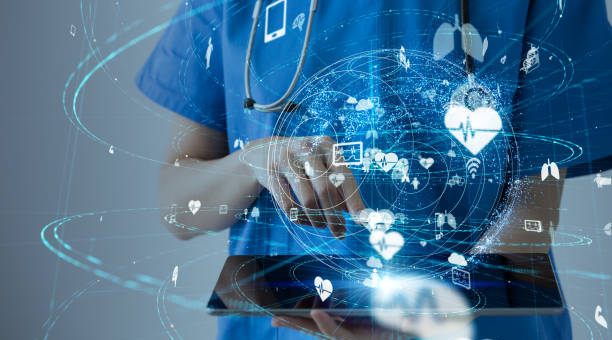Machine learning enables various healthcare applications that improve patient outcomes and allow healthcare organizations to operate more efficiently. These include disease prediction, data visualization, enhanced diagnosis, drug discovery and development, and patient monitoring via telemedicine. ML also streamlines back-office tasks for physicians. For example, ML-enabled automation such as optical character recognition and natural language processing frees doctors from record keeping and organizes clinical documentation into data suitable for machine learning.
Detecting Diseases at an Early Stage
One of the essential benefits of machine learning for healthcare is that it can help with the early detection of diseases. This will allow doctors to give patients the best possible care, reducing complications and saving lives.
For example, ML algorithms can track infectious disease outbreaks by using online real-time reporting systems. It gathers data from official reports, media coverage, local observers, and subscriber submissions and then creates an interactive map that displays the location and scope of the disease. This can help to inform and guide a country’s response to an outbreak.
In addition, ML can also be used to detect abnormal signs of disease or illness by monitoring patient vitals and symptoms. For example, a machine learning algorithm could monitor a patient’s heart rate or blood pressure and alert a doctor if it is outside a normal range. In the future, ML could become an integral part of the healthcare industry. This will allow hospitals to offer personalized treatment plans for each patient. While some doctors may be worried that machine learning will replace them, it is important to remember that the human touch is still essential to providing excellent patient care.
Predicting Diseases
In healthcare, identifying and diagnosing diseases at an early stage can be critical to improving patient outcomes. It can also prevent the spread of dangerous infections and avoid unnecessary deaths.
Fortunately, machine learning can help in this area too. It’s designed to handle large data sets, which is often the case when dealing with healthcare. It can also identify patterns that might indicate the onset of certain diseases in patients, especially those with a high risk of developing them. For example, an ML solution can detect the signs of a disease outbreak by analyzing satellite images and news reports worldwide. The software then aggregates the information to create an online map of outbreaks. It can even alert doctors of potential risks to their patients.
Another example is the application of ML in pharmaceutical research and development. The system ingests a huge amount of medical literature and patents. It can then identify non-obvious connections and generate multiple potential drug combinations that may be effective in a particular patient. In the future, ML technology will continue to revolutionize the healthcare industry. It’s already helping to improve healthcare quality and reduce costs by automating back-office processes.
Detecting Risk Factors
Machine learning can help detect patients’ risk factors and provide personalized treatment based on their health history. This will lead to better patient outcomes and reduce costs.
Healthcare machine learning technologies can quickly and easily organize large unstructured data sets, such as text documents in electronic health records (EHRs), into more structured data so that healthcare professionals can rapidly glean actionable insights. For example, natural language processing can analyze the content of EHRs and identify relevant information about a patient’s health status. At the same time, predictive analytics can highlight patterns that might indicate the likelihood of disease.
Moreover, predictive analytics can also help predict how a drug will react to a patient’s body. This will improve the efficacy of the medication and prevent adverse reactions, such as drug-drug interactions.
Prevention is just as important as detecting diseases at an early stage. The healthcare industry uses many machine learning applications that have successfully improved medical care. However, these tools must be easy for medical professionals to avoid adding complexity to the existing workflow.
Preventing Diseases
Machine learning algorithms can be used to detect a disease from its early stages and prevent it from spreading. This is done by combining patient medical history data and predictive analytics. It can also identify and predict the risk factors that lead to a specific disease. This can help doctors prevent patients from getting sick by analyzing their data and providing them with proper treatment at an early stage. While machine learning can greatly improve healthcare, several obstacles must be overcome. For example, it is important to ensure that the software is not biased. Otherwise, it could cause inaccurate diagnoses or worsen patient outcomes. Another challenge is that the technology can be expensive and time-consuming to implement. This can be especially challenging for small- and medium-sized healthcare facilities.
Despite these challenges, there is hope. Many ML developers are working to develop user-friendly technologies that can be easily incorporated into a medical professional’s workflow. This will allow them to use the technology more effectively, improving patient outcomes and increasing efficiency. Furthermore, collaboration between ML developers and medical professionals is vital to developing the right software for healthcare.
Author
-

Meet Johnathan Trot, the creative force behind engaging content online. As a CTO, he blends tech expertise with a passion for storytelling. With a knack for simplifying complex concepts, Johnathan crafts content that captivates audiences. Join him on a journey where innovation meets simplicity, making tech accessible and enjoyable for all.



